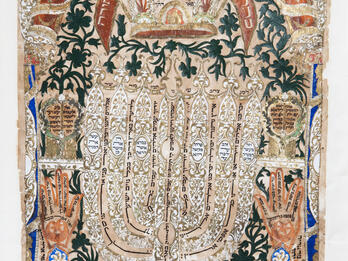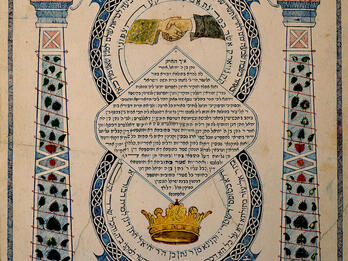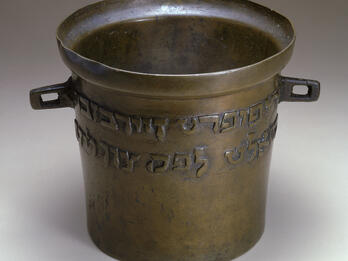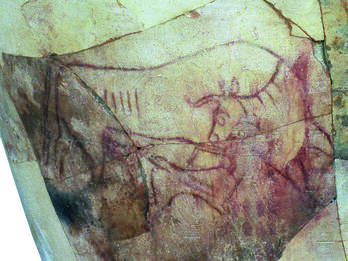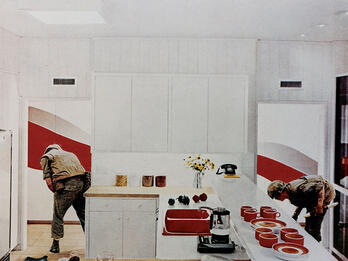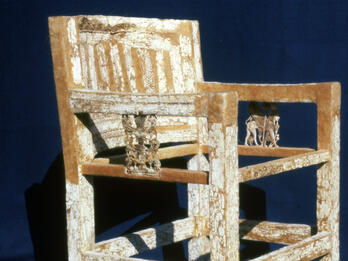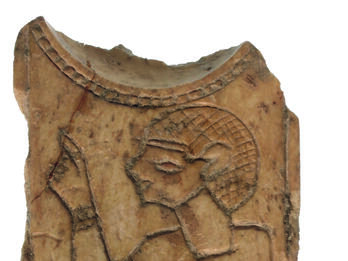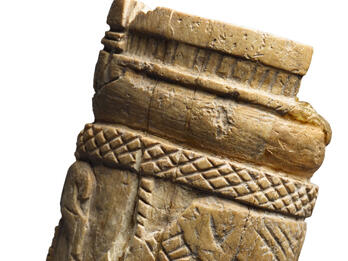Showing Results 31 - 40 of 54
Restricted
Image
Paper cuts have been a tradition of Jewish folk art, with the earliest record of one dating to the fourteenth century. Given the widespread availability of paper in Europe by the mid-nineteenth…
Contributor:
Artist Unknown
Places:
Smyrna, Ottoman Empire (İzmir, Turkey)
Date:
1858–1859
Subjects:
Categories:
Restricted
Image
The ketubah is a religious and legal contract of marriage. Traditionally, it outlines the conjugal and economic conditions of a marriage and is written in Aramaic. This printed ketubah created by…
Contributor:
Zemah Davidsohn
Places:
New York City, United States of America
Date:
1863
Subjects:
Categories:
Public Access
Image
Because observant Jews do not light fires or cook on the Sabbath, they prepare hot meals before the beginning of the Sabbath. In some communities, families brought their Sabbath stew (known as cholent…
Places:
Frankfurt am Main, Holy Roman Empire (Frankfurt am Main, Germany)
Date:
1579/1580
Subjects:
Categories:
Public Access
Text
Elitsedek/Eltsadak (son of) Shahli
Places:
Rehob, Land of Israel (Tel Reḥov, Israel)
Date:
9th Century BCE
Subjects:
Categories:
Restricted
Text
A bath measure for the king.
Places:
Lachish, Land of Israel (Tel Lakhish, Israel)
Date:
8th Century BCE
Subjects:
Categories:
Restricted
Image
This drawing of a cow and her calf appears on the right side of a pithos (storage jar) from Kuntillet Ajrud. The cow and calf are a common motif associated with fertility and protection. Kuntillet…
Places:
Kuntillet Ajrud, Land of Israel (Kuntillat Jurayyah, Egypt)
Date:
Iron Age IIB, Late 9th–Early 8th Century BCE
Subjects:
Categories:
Restricted
Image
Red Stripe Kitchen is from Martha Rosler’s Bringing the War Home: House Beautiful, a series created to protest the Vietnam War and the ways in which Americans distance themselves from violence…
Contributor:
Martha Rosler
Places:
New York, United States of America
Date:
1967–1972
Categories:
Restricted
Image
Ivory-inlaid chair, Salamis, Cyprus, 8th or 7th century BCE. Among the most beautiful items surviving from Israel and neighboring countries are the ivory carvings used for decorating furniture, among…
Places:
Salamis, Cyprus (Famagusta, Cyprus)
Date:
Iron Age II, 8th–7th Century BCE
Subjects:
Categories:
Restricted
Image
This spoon from Hazor has a wide handle intricately incised on its front with a sequence of palmettes curving upward instead of the more common downward-turning volutes. The spoon’s use is unclear. It…
Places:
Hazor, Land of Israel (Tel Hazor, Israel)
Date:
Iron Age II, 8th Century BCE
Subjects:
Categories:
Restricted
Image
The primary register of this handle from Hazor shows two grazing caprids (perhaps deer or gazelles), a popular motif (see “Bulla of Shebanyahu Son of Samak, with Grazing Doe”). Beneath them is a…
Places:
Hazor, Land of Israel (Tel Hazor, Israel)
Date:
Iron Age IIB, first Half of 8th Century BCE


